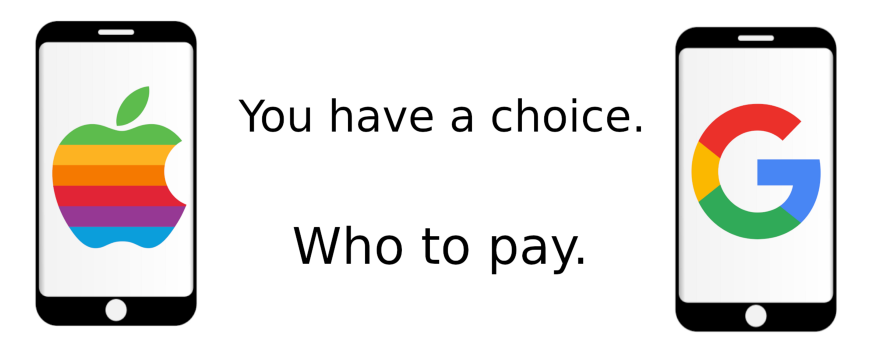
Monopoly is an ugly word. When only one company makes a product, they will raise the price and make as much profit as they can. You may even be able to name a few monopolies: Google, Facebook, Microsoft, Amazon, etc.. Americans need to learn a new ugly world: oligopoly. An oligopoly is when only a handful of companies make a product. It is not as bad as a monopoly, but prices still rise. Oligopoly is everywhere in America and, together with monopoly, they (on average) waste $600 and steal $2,200 from every American each year.
Oligopoly is everywhere. Apple and Google account for 99.85% of smartphone operating systems. (And app sales markets!) Visa and MasterCard account for 90% of all credit card transactions. Verizon, AT&T, and T-Mobile account for 98% of cellphone plans. (Sprint recently merged with T-Mobile.)

Many industries don’t look like oligopolies because there are many brands, but there may be only a few companies behind them. Your store may stock hundreds of brands of beer, but Budweiser, Corona, Stella Artois, Natty Light and 400 other brands are all made by AB Inbev. (AB Inbev is the result of the largest and second largest brewery merging.) Our mass media industry looks diverse — TV, movies, music — but most is owned by just 4 corporations: Comcast, Disney, ViacomCBS, and AT&T. Oxfam has a wonderful graphic showing the hundreds of household brands controlled by just 10 companies.
Oligopoly affects life-and-death too. Diabetics need insulin and the medicine sells at absurdly high prices because only 3 companies make it. People with allergies often need to carry an EpiPen. These life-saving devices are expensive because they are made by only 2 companies … and the expensive price more than doubled when 1 company had a manufacturing problem.
Thankfully, an economist has studied the problem and put a price tag on it. Monopolies and oligopolies both make less product and charge more for it. Consumers get hit by both of these effects — as the author put it “a double whammy”.
When monopolies/oligopolies make less, some people go without. This lack-of-expected-sales is called the “deadweight loss”. In 1997, America lost 11.2% of corporate output to deadweight. Since that time, there have been a lot of corporate mergers and, in 2017, we lost 14.1%. Just the 2.9% increase amounts to $209 billion or roughly $600 for every American each year.
When monopolies/oligopolies charge more, consumers hand more money to the seller, which becomes pure corporate profit. And from 1997 to 2017, the portion of all corporate output going to profits increased 86%. The lost “consumer surplus” from just the increase amounts to roughly $760 billion or $2,200 for every American each year.
Monopoly and oligopoly hurt America. The companies make less product and deprive some Americans of what they need to live. The product that the companies do sell is overpriced, diverting money from consumers — every American — to stock holders — who tend to be rich. This increases income inequality. Together, the unmade items and diverted funds, cost an average of $2,800 for every man, woman, and child in America, each year. And that number is only the increase over the last 20 years — the true value is probably higher.
NOTE: Bruno Pellegrino privately sent me the numbers used in this article. He plans to release a new revision of his paper using these numbers. The currently public version of his paper, released January 23, 2020, puts the values for the deadweight loss and consumer surplus at roughly $750 and $1,700 per American per year.